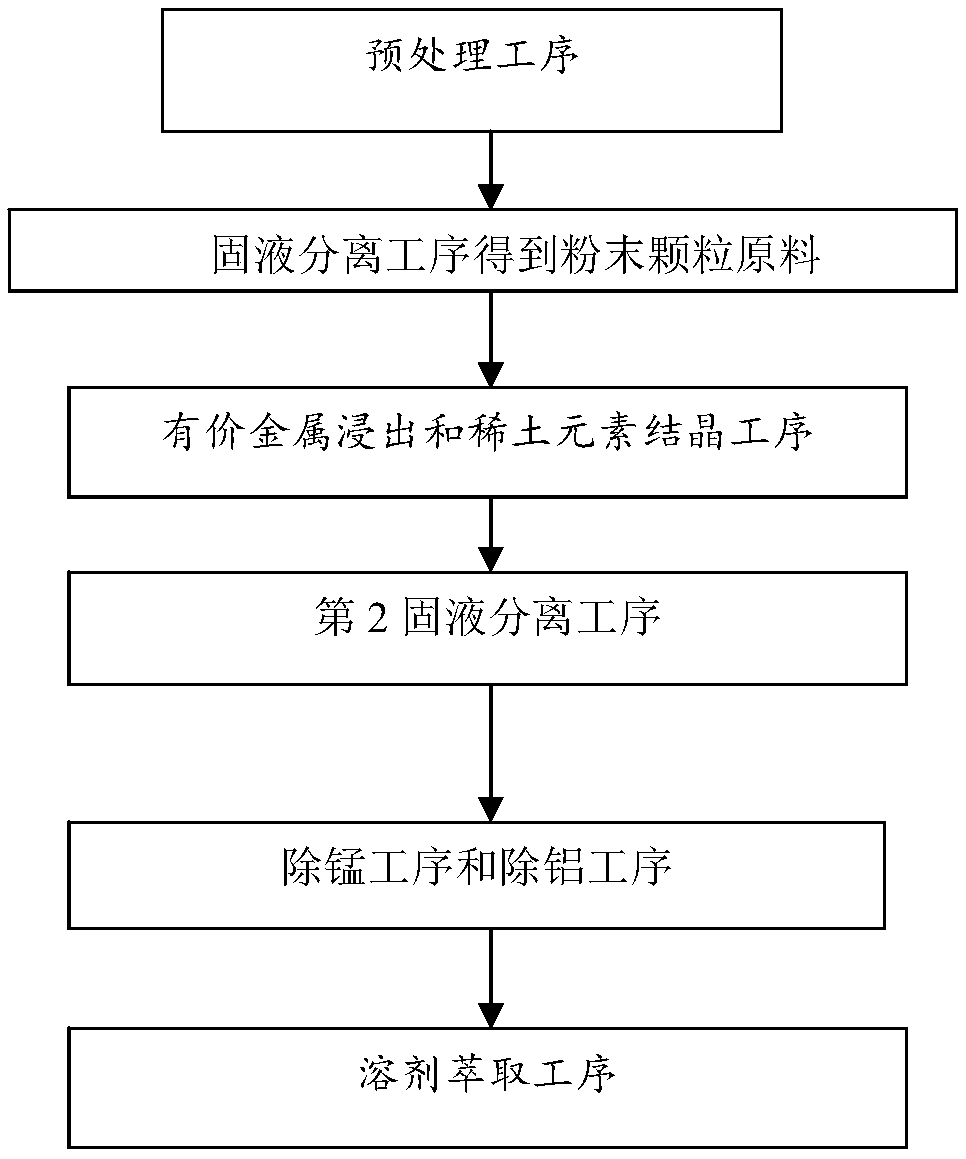Recovering method for valuable metal in waste nickel-cobalt-manganese-lithium ion battery
A technology of nickel-cobalt-manganese-lithium and valuable metals, which is applied in the field of recycling valuable metals in waste nickel-cobalt-manganese lithium-ion batteries, can solve the problems of high processing cost, difficult application, and large number of processes, and achieve process and equipment simplification , simplify the reaction equipment, simplify the effect of the reaction process
- Summary
- Abstract
- Description
- Claims
- Application Information
AI Technical Summary
Problems solved by technology
Method used
Image
Examples
Embodiment Construction
[0047] The technical solutions of the present invention will be described in detail below with reference to the embodiments.
[0048] A method for recovering valuable metals in waste nickel-cobalt-manganese lithium-ion batteries, comprising the following steps:
[0049] (1) Pretreatment process
[0050] The waste nickel-cobalt-manganese lithium-ion battery is disassembled, discharged and broken, and the positive and negative electrode materials are roughly selected, and the positive and negative electrode materials are pulverized; sieved to obtain powder particles; in order to remove the soluble in the powder particles Water-soluble alkali metal salts such as potassium and sodium of water, add water to the powder particles and stir, and stir to obtain a cleaning liquid slurry, and the solid-liquid separation of the cleaning liquid slurry, the obtained powder particles are the solid valuable Metal recycling raw materials;
[0051] (2) The leaching process of nickel, cobalt, m...
PUM
 Login to View More
Login to View More Abstract
Description
Claims
Application Information
 Login to View More
Login to View More - Generate Ideas
- Intellectual Property
- Life Sciences
- Materials
- Tech Scout
- Unparalleled Data Quality
- Higher Quality Content
- 60% Fewer Hallucinations
Browse by: Latest US Patents, China's latest patents, Technical Efficacy Thesaurus, Application Domain, Technology Topic, Popular Technical Reports.
© 2025 PatSnap. All rights reserved.Legal|Privacy policy|Modern Slavery Act Transparency Statement|Sitemap|About US| Contact US: help@patsnap.com

